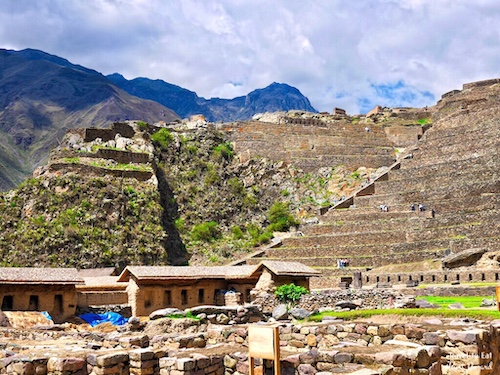
During the Inca Empire, Ollantaytambo was the royal estate of Emperor Pachacuti who conquered the region, built the town and a ceremonial center around 1440 CE. The “fortress” of Ollantaytambo is actually a religious structure, but it did function as a retreat from the attacks of the conquistadores in the 1500’s. It was last held by Manco Inca, who, leading resistance forces against the Spanish, retreated to Ollantaytambo in January of 1537. The Spanish forces attacked on horseback, but Manco Inca’s band, in a technical tour de force, flooded the entire approach plain with water forcing the Spanish to retreat and regroup. Though Ollantaytambo was a highly effective fortress, it also served as a temple. A finely worked ceremonial center is at the top of the terracing. Some extremely well-built walls were under construction at the time of the conquest and have never been completed.
The Quarry
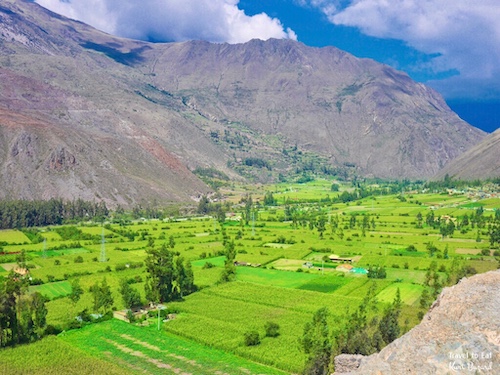
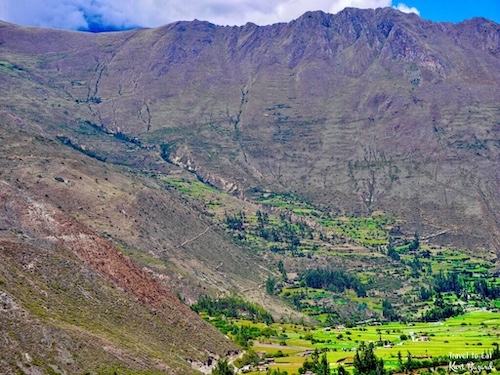
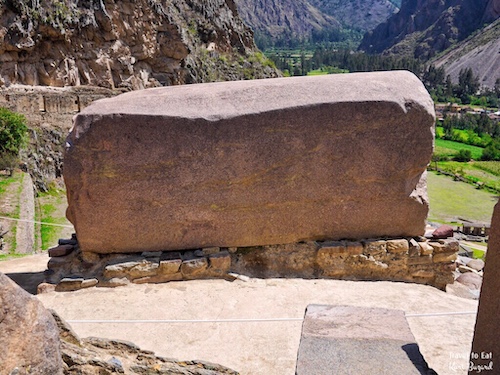
The stone was quarried from the mountainside 6km (3.78 miles) away, high above the opposite bank of the Urubamba river. This led to a large and jagged scar on the mountain as you can see above. Transporting the huge stone blocks to the site was a stupendous feat. The Incas are thought to have used wooden rollers to haul the giant stones they used to build their cities. The Incas’ technique to move massive blocks across the river meant carting the blocks to the riverside then diverting the entire river channel around them. When the Incas had to transport heavy objects, they relied on manpower, often to the considerable sorrow of the men doing the powering (some 3,000 of 20,000 workers died dragging one particularly massive stone, according to chronicles). Since they had no wheels, there were no block and tackle aids to get these huge stones up the mountain other than brute force.
Terraces or Andenes
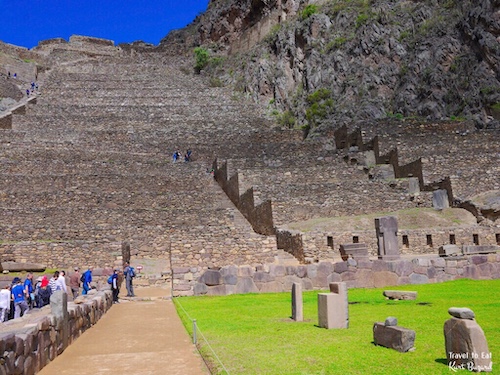
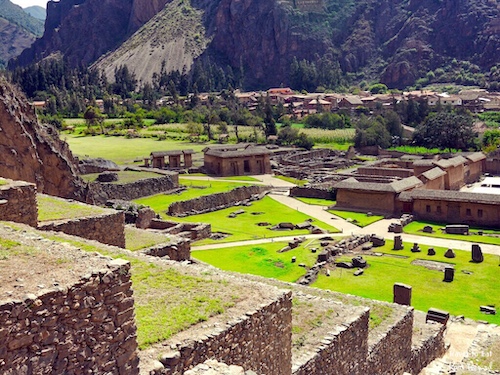
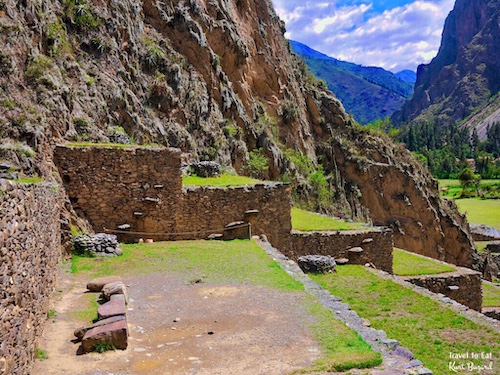
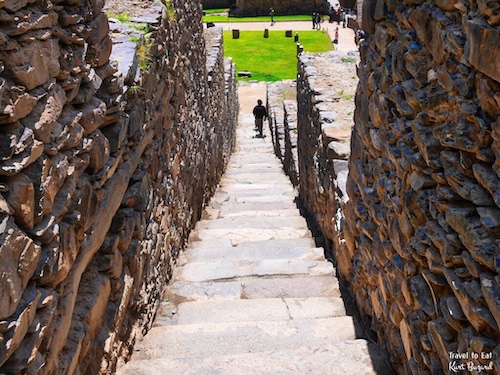
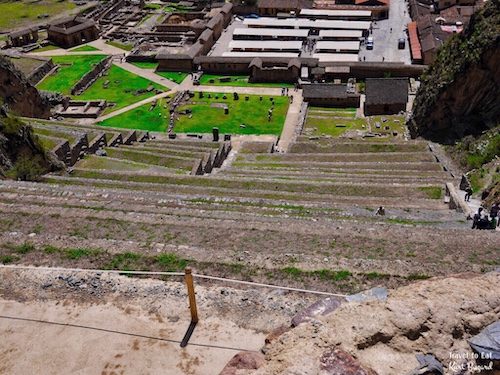
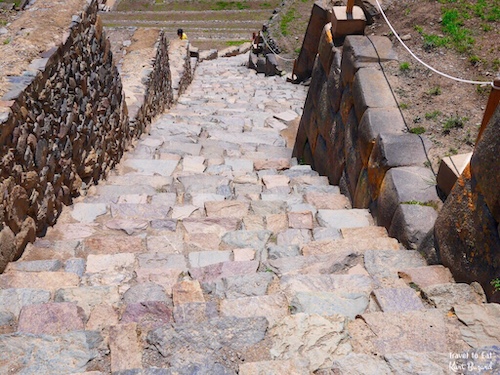
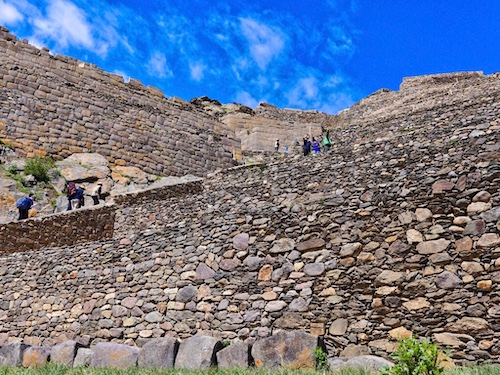
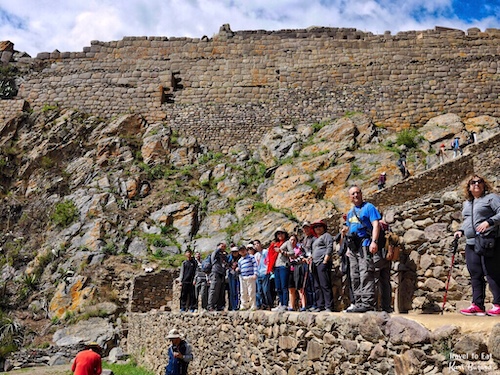
As you climb the Inca stairs to the top of the fortress of the Ollantaytambo ruins you begin to fathom just how large this structure is. The terraces are taller than the average man and much wider than they look from the bottom. In addition, although most of the terraces were built with field stone, you can see that the area immediately below the sacred areas were built with large dressed stones, typical of Inca Empire. These agricultural terraces were called “andenes” which in Spanish means platform. The benefits of andenes include utilizing steep slopes for agriculture, minimizing the threat of freezes, increasing exposure to sunlight, controlling erosion, improving absorption of water, and better aeration of the soil.
Pinkullyuna Hill
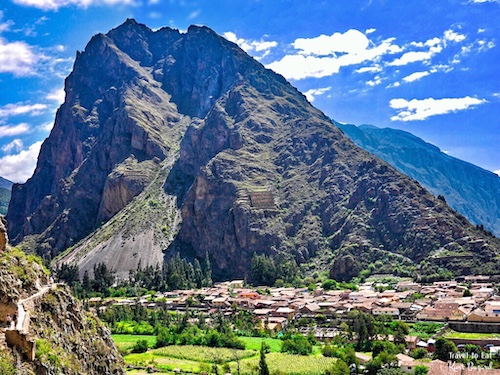
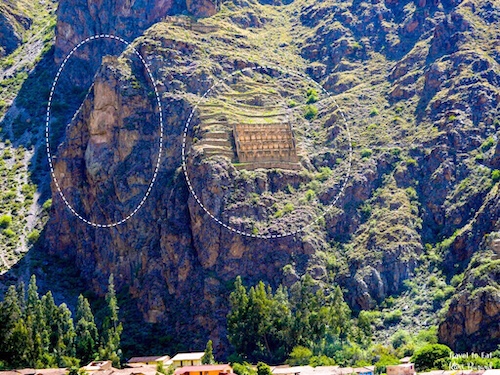
As you climb higher you get a great view of Pinkullyuna Hill that overlooks Ollantaytambo on the opposite side. Here you can clearly see the giant carved head of Viracocha, the Inca creation god, as well as several other buildings including two grainaries or qullqas. These quellas were used to store food at a higher altitude relying on the wind and cold to preserve not just grain but other crops like potatoes.
Temple Complex
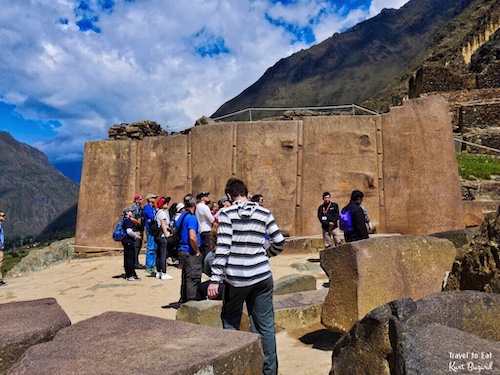
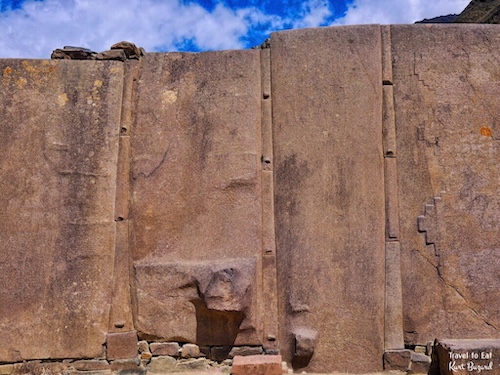
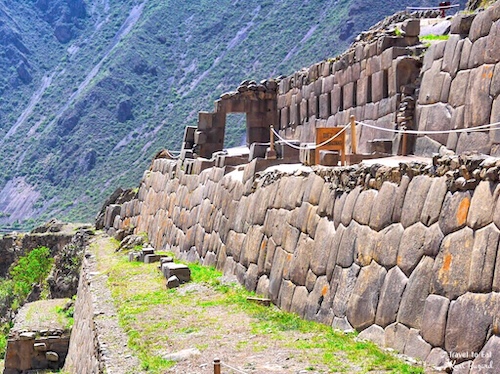
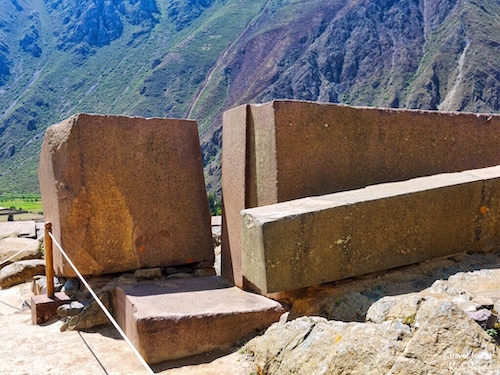
A short distance from the top of the fortress you enter the temple complex. This section includes many finely crafted stone pieces such as the Enclosure of the Ten Niches. As you enter the important Temple of the Sun you will see a number of discarded large stone known as piedras cansadas or “tired stones”. This uncompleted temple holds the Wall of the Six Monoliths. Each of these stones weighs 50 tons and were brought from the nearby quarry. The Temple of the Sun was like a calendar for the Incas and had specific purpose especially on the the winter and summer solstice. Our guide had photos taken at these times demonstrating the uses of the temple of the sun, the sun dial and other features the Incas built and used. Had the sun temple structure at Ollantaytambo been completed it would have been a spectacular construction. The reason for it being left like a ancient building site are unknown. Of interest is Inca society operated a solar and a lunar calendar simultaneously. Each delineated the separate rituals and festivals performed by men and women respectively during the year.the
The Fortress
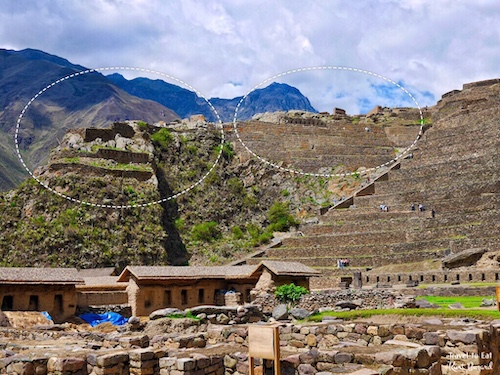
Archaeologists today, believe Ollantaytambo was built upon the ruins of a far older city and they are not sure of the origins of that city. A pre-Incan fortress can be seen to the left of the sacred Inca area above the terraces as seen above. The Aymara or Aimara people are an indigenous nation and language in the Andes and Altiplano regions of South America; about 1 million live in Bolivia, Peru and a much lesser extent Chile. Their ancestors lived in the region for many centuries before becoming a subject people of the Inca in the late 15th or early 16th century, and later of the Spanish in the 16th century. The Aymara may be related to the Wari/Huari (500-900 CE), known for terraces and roads, or the Tiwanaku (500-1000 CE) one of the most important precursors to the Inca.
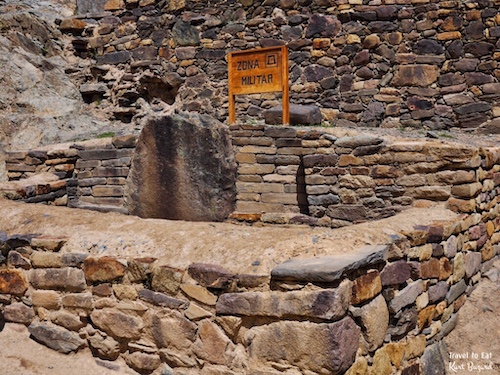
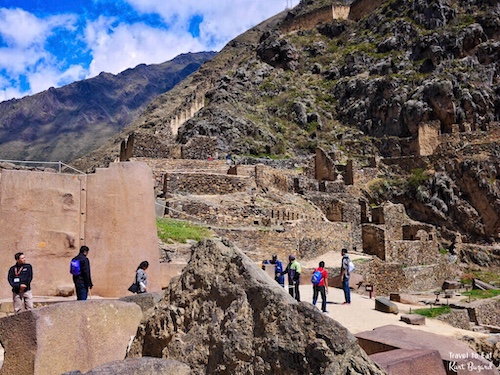
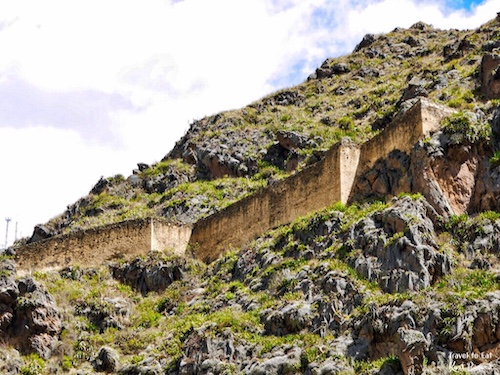
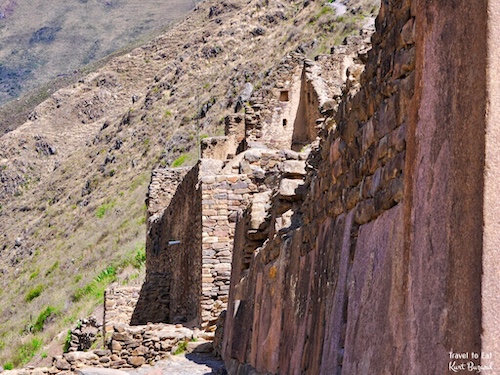
The remaining fortifications of the Ollantaytambo fortress, to the right of the sacred area, were built during the time of Manco Inca. Note that they were built of field stone, probably hastily erected. Manco Inca Yupanqui (1516–1544) was the founder and monarch (Sapa Inca) of the independent Neo-Inca State in Vilcabamba, although he was originally a puppet Inca Emperor installed by the Spaniards. The Pizarro brothers so mistreated Manco Inca that he ultimately tried to escape in 1535. He failed, was captured and imprisoned. Hernando Pizarro released him to recover a golden statue of his father Huayana Capac. Only accompanied by two Spaniards, he easily escaped a second time. Manco then gathered an army of 200,000 Inca warriors and laid siege to Cusco in early 1536, taking advantage of Diego de Almagro’s absence. After ten months, Manco retreated to the nearby fortress of Ollantaytambo in 1537. Here Manco successfully defended attacks by the Spaniards in the battle of Ollantaytambo. Abandoning Ollantaytambo (and effectively giving up the highlands of the empire), Manco Inca retreated to Vitcos and finally to the remote jungles of Vilcabamba. After many guerrilla battles in the mountainous regions of Vilcabamba, Manco was murdered in 1544.
Balcon Plata
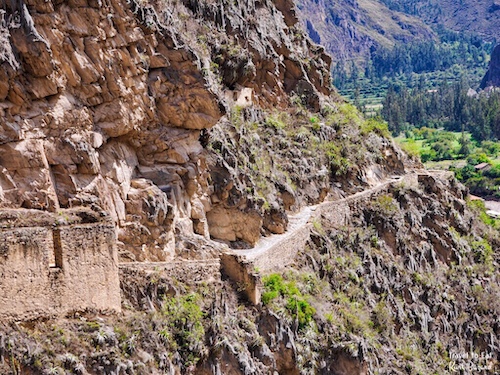
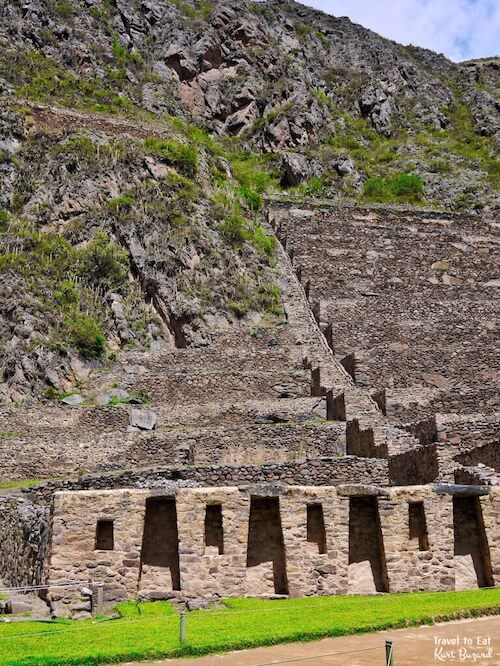
As you move away from the Sun Temple the pathway takes you towards Balcon Pata. This is a narrow ledge that leads to two large granaries or qullqas and the Manyaraque andenes or terraces above the Manyaraque plaza.
Manyaraque Plaza and Pacha
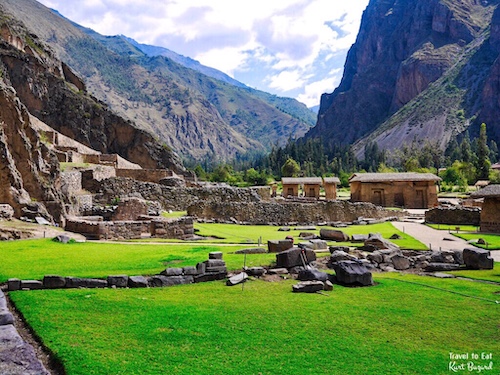
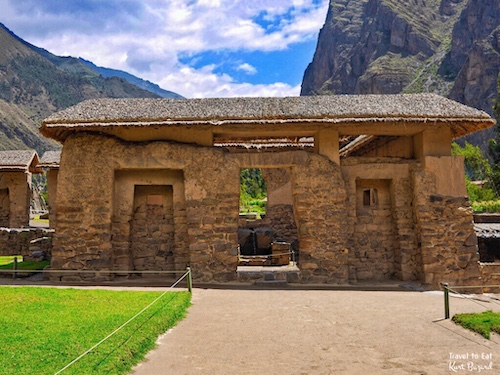
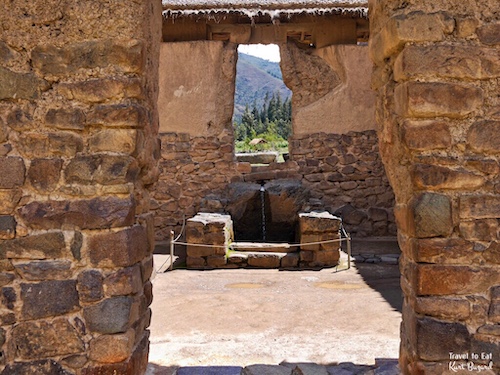
This little building is said to house the Fountain of Youth. It has no roof, only four walls. In Peru the symbolism of sacred geometry, colors, numbers etc is present everywhere. One interpretation of this building states:
On both sides of the building are just two little windows like the ones in the blocked entrances. These little and high placed windows represent the “prison-like” existence of the human being, because when inside there is a feeling of being locked in since there are only walls. The further one enters into the “cube” and proceeds one is attracted to a big “window” with a view onto the sky that is said to target the Pleiades, the seven sisters. Placed in front is the Fountain of Youth with the waters (metaphor for consciousness) of Love running abundantly over a black stone that represents Pachamama, Mother Earth. The water runs in the middle and the stream divides the background in two. Thus it seems to create duality and hence the water falls in a square basin, Earth, where duality, time and space and cause and effect, reigns. Earth is infinitely energized and refreshed by the flow of energy consciousness as Love and Pachamama bestowes her Love with abundance.
There is definitely a spiritual quality to the building connected by water. The three doors might represent the three Pachas in Inca theology, the hana pacha, hanan pacha or hanaq pacha (Quechua, meaning “world above”), ukhu pacha (“world below”), and kay pacha (“this world”).
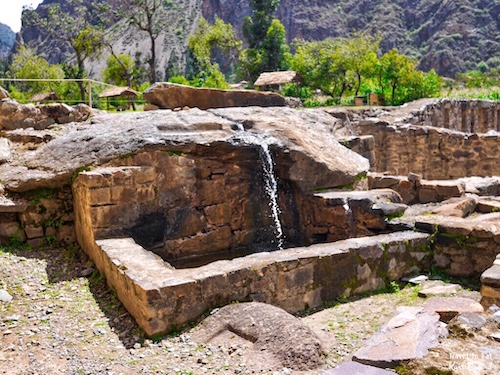
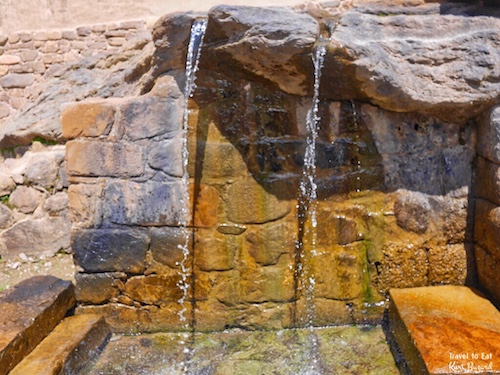
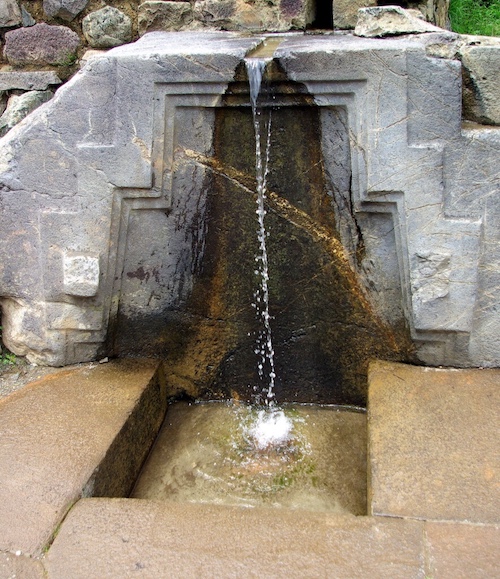
The Manyaraqui plaza with its many water fountains, were believed to be a part of a center to worship water. The pacha (often translated as world) was an Incan concept for dividing the different spheres of the cosmos in Incan mythology. There were three different levels of pacha: the hana pacha, hanan pacha or hanaq pacha (Quechua, meaning “world above”), ukhu pacha (“world below”), and kay pacha (“this world”). Caves and springs serve as connections between ukhu pacha and kay pacha. Rainbows and lightning serve as connections between hanan pacha and kay pacha. In addition, human spirits after death could inhabit any of the levels. Some would remain in kay pacha until they had finished business, while others might move to the other levels. Thus the Manyaraque plaza was a temple to the connection between ukhu pacha and kay pacha or between the underworld and this world.
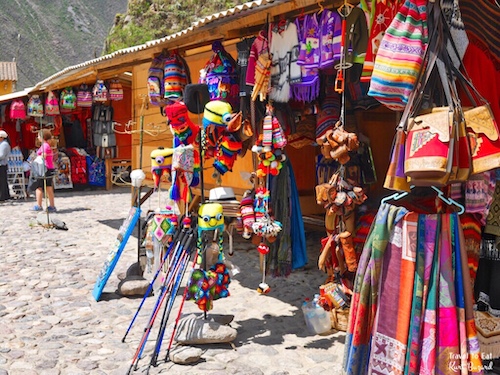
I am going to stop here, the Ollantaytambo ruins are definitely worth a visit if you are in the area. I hope you enjoyed the post, please leave a comment.
[mappress mapid=”211″]
References:
Ollantaytambo Fortress: http://www.peru.travel/en-us/what-to-do/ancient-peru/ollantaytambo-fortress.aspx
Incan Fortress of Ollantaytambo: https://davidcrews.wordpress.com/2012/03/28/the-incan-fortress-of-ollantaytambo/
Mysterious Ollantaytambo: https://hiddenincatours.com/mysterious-megalithic-master-works-at-ollantaytambo-peru/
Only Peru Guide: http://theonlyperuguide.com/peru-guide/the-sacred-valley/highlights/ollantaytambo-ruins/
Inca and the Wheel: http://www.straightdope.com/columns/read/223/why-did-the-peoples-of-the-new-world-fail-to-invent-the-wheel
Chakana the Incan Cross: https://kimgraaemunch.wordpress.com/tag/uku-pacha/
Ancient Alignment in the Andes: https://grahamhancock.com/trumand1/
Peruvian Fountain of Youth: http://www.eternalsymbols.com/peru-ollantaytambo/
Tiwanaku: http://www.crystalinks.com/preinca.html
Sent from my iPad

